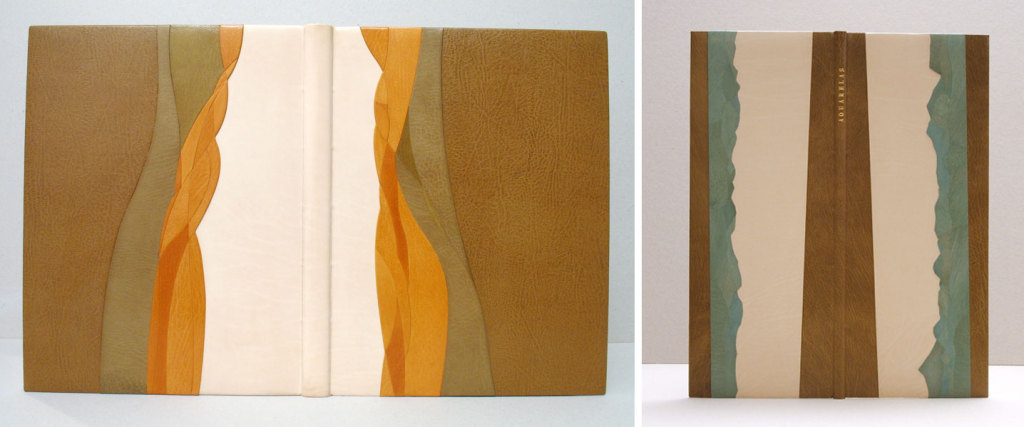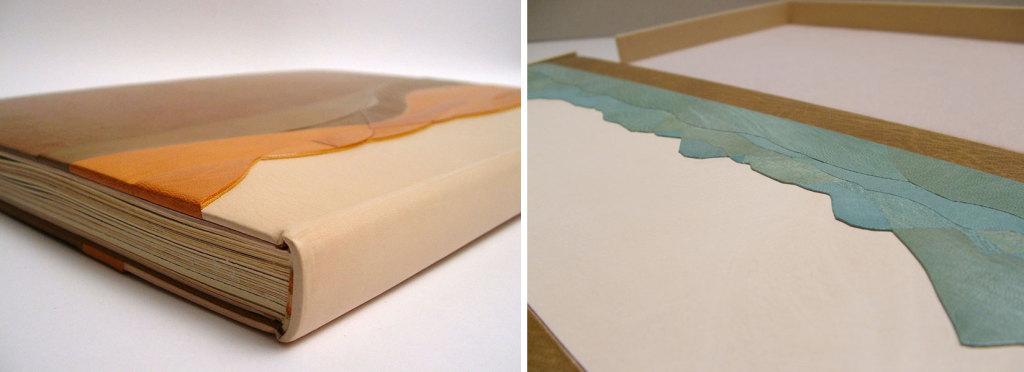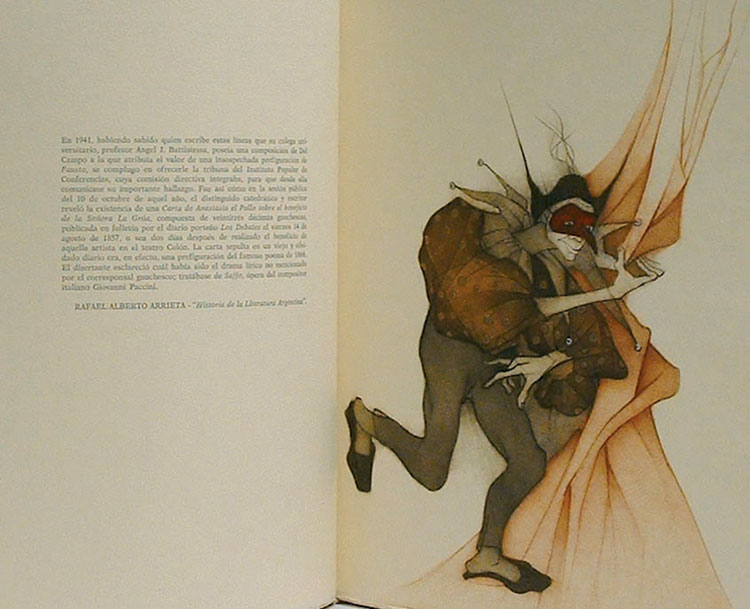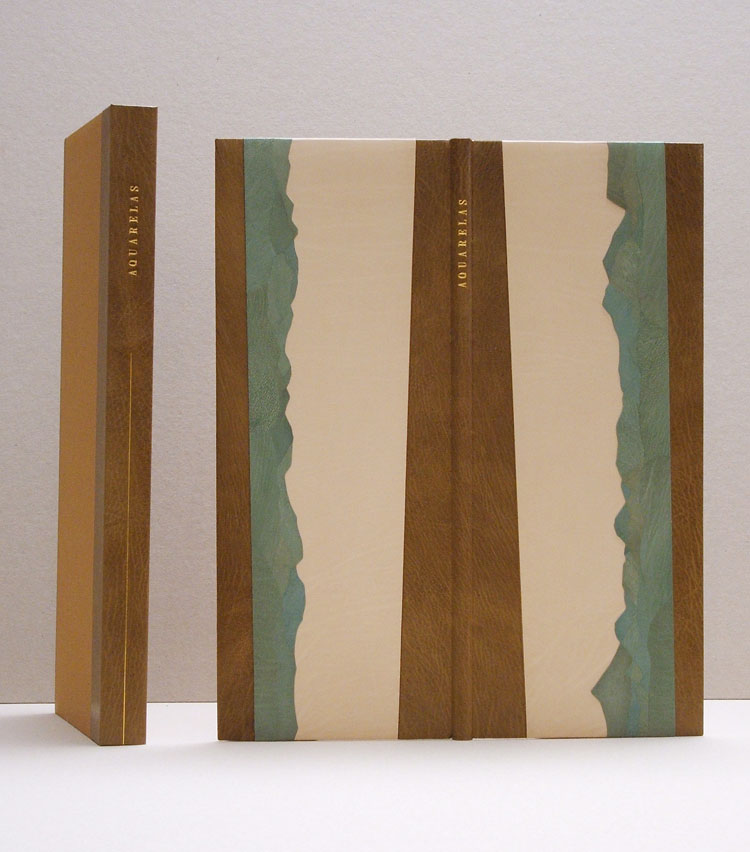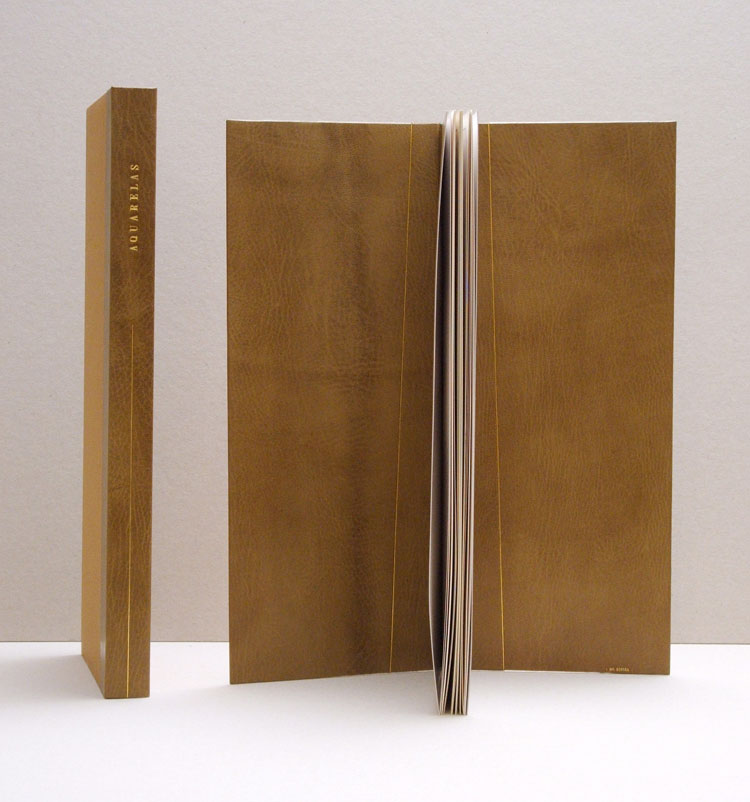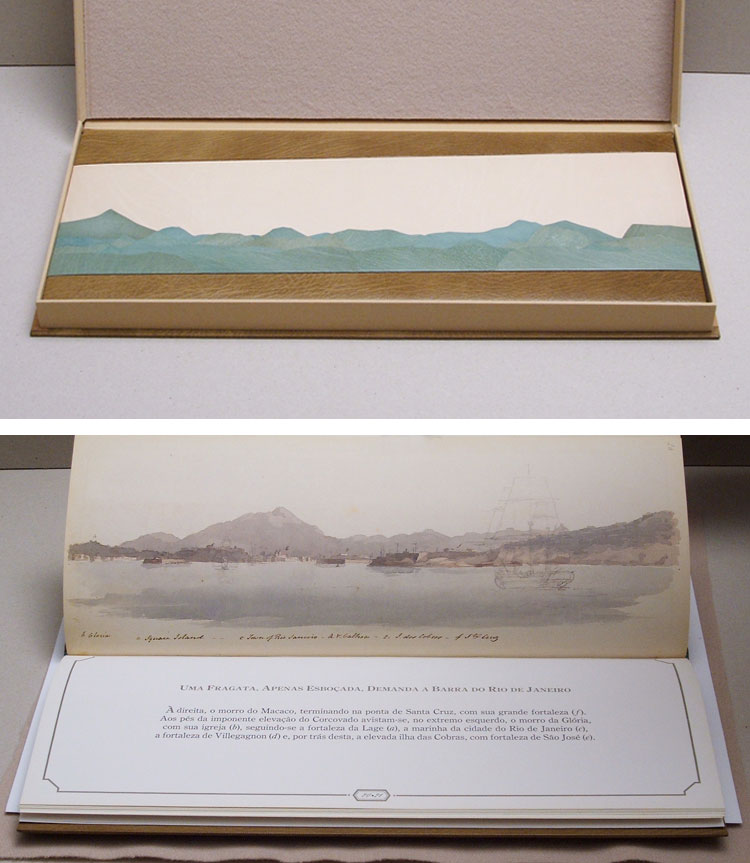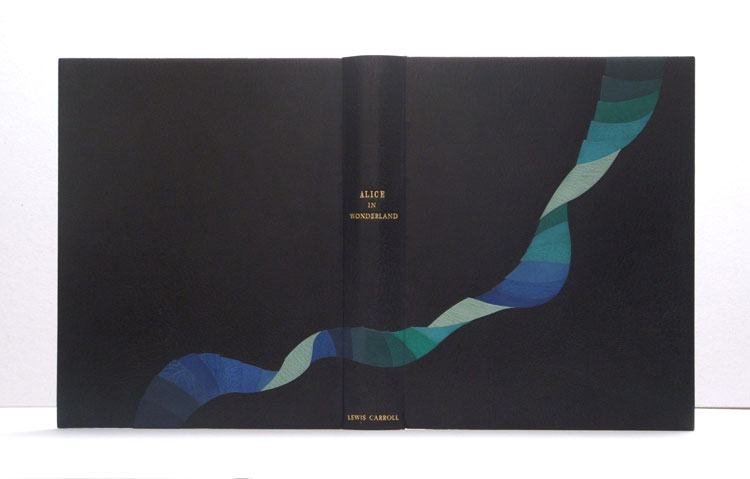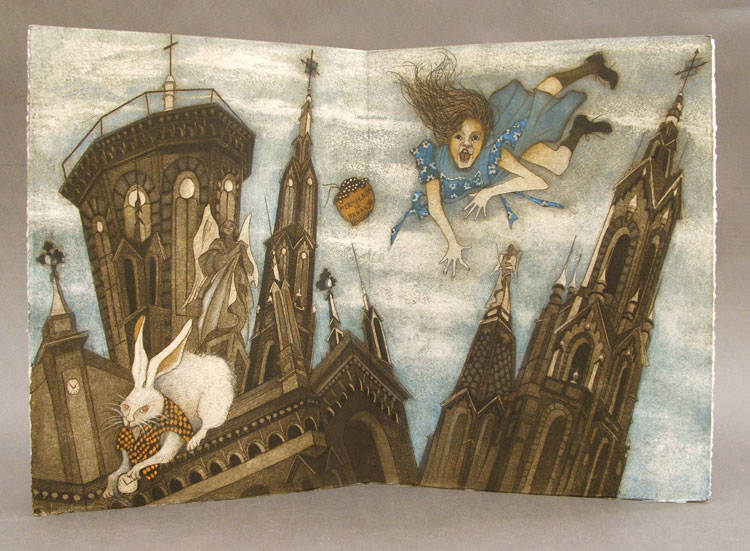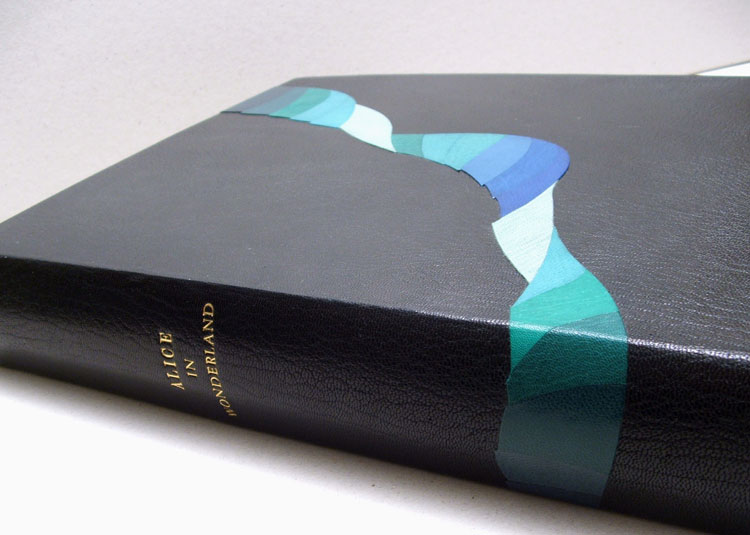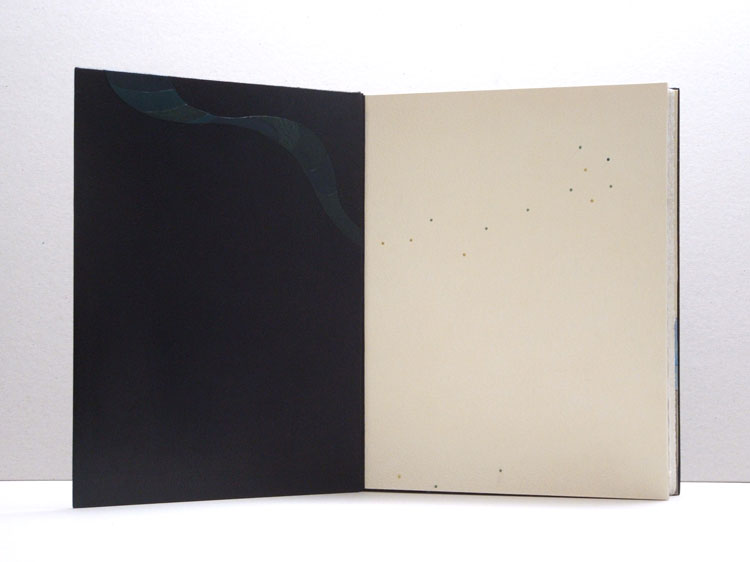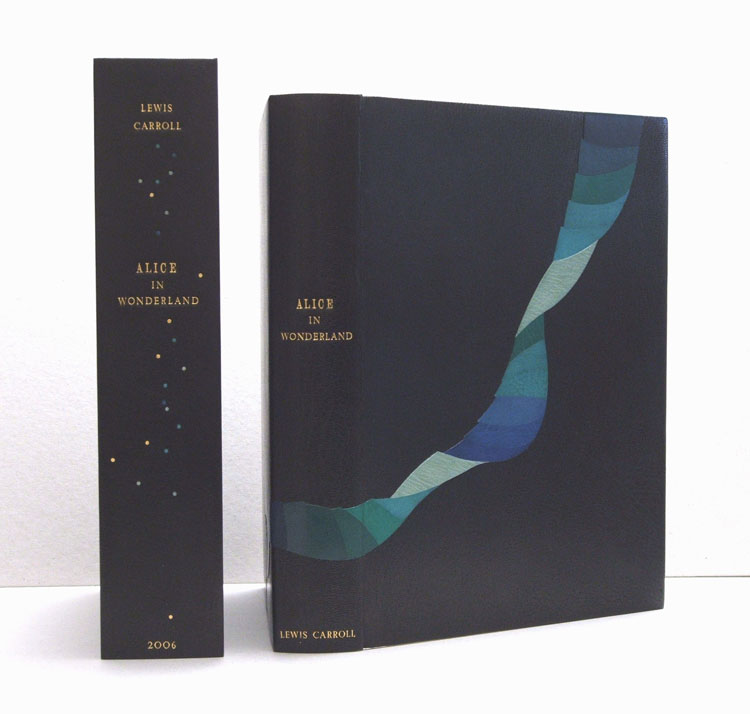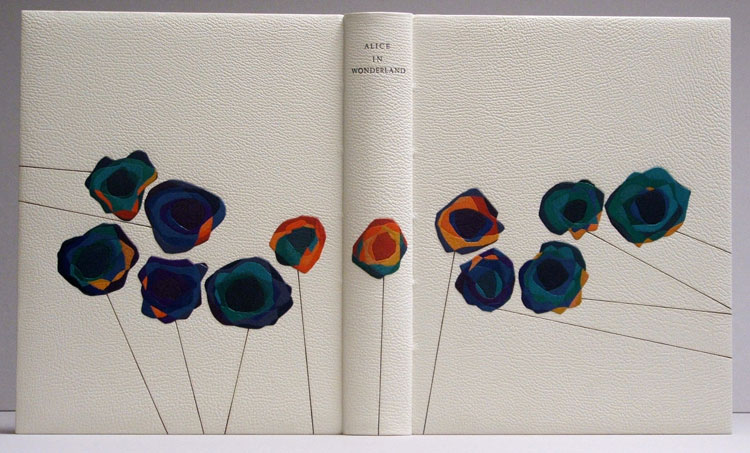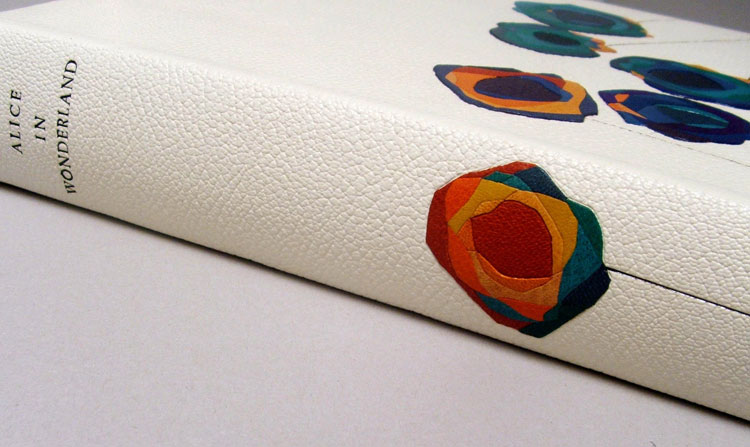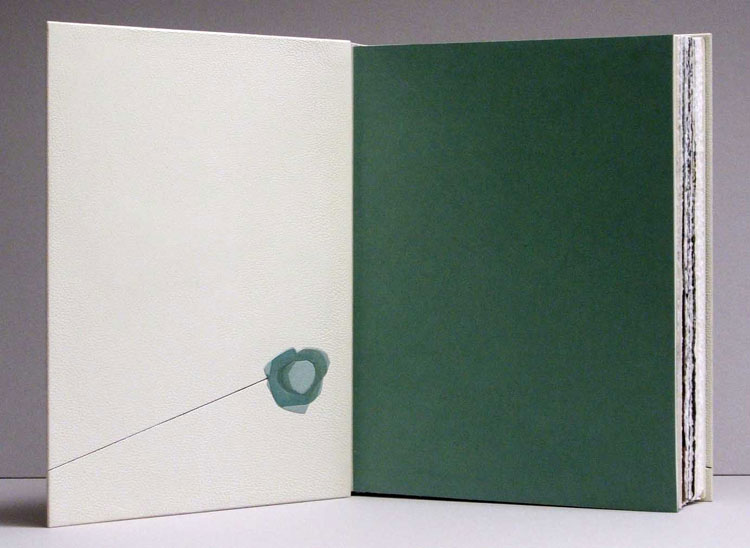The design on these two bindings are very stylistic of Sol Rebora’s fine binding work. I wanted to ask her about the technique behind this signature look.
These bindings are bound in a similar fashion with the boards built up with 7 different layers. Are these layers covered in leather off the book and then attached?
The way I used to build the different layers of relief is:
I cover the lower layers first, then I use some cardboard, with different thicknesses, and finally I cover the cardboards with very thin leather, working within traditional onlay techniques.
The binding on the left is Cartas de Anastasio el Pollo. The binding is covered in calfskin at the spine with the remaining portion covered in various goatskin relief onlays. The edge to edge doublures are matching the leather near the fore edge of the covers. Sol shared an image of one of the illustrations, which demonstrates her inspiration for the binding design.
The binding on the right is Acuarelas. Published by Livraria Kozmos Editora in 1991, this artful text includes watercolors by Lieutenant Robert Pearce. The binding is full leather constructed in four sections. The spine and front edges are covered in a beige goatskin, the central panel is natural box calf and the relief onlays are a series of blue goatskin. The latter has been worked to get different tones of the same color.
The title has been tooled in gold along the spine.
The doublures are also beige goatskin, with a single vertical line tooled in gold. The flyleaves are also goatskin from Argentina.
From Sol on the design concept:
The design is based on the watercolours in the book, which show outlines of the Brazilian coast taken from the sea. To simulate the movement of the water, I took photos of the water in a swimming pool, printed the pictures and working with a transparent paper, copied the strongest lines. I then developed them to get the feeling of movement. The pieces of blue leather were sanded and burnished to get different tones of the same color.
